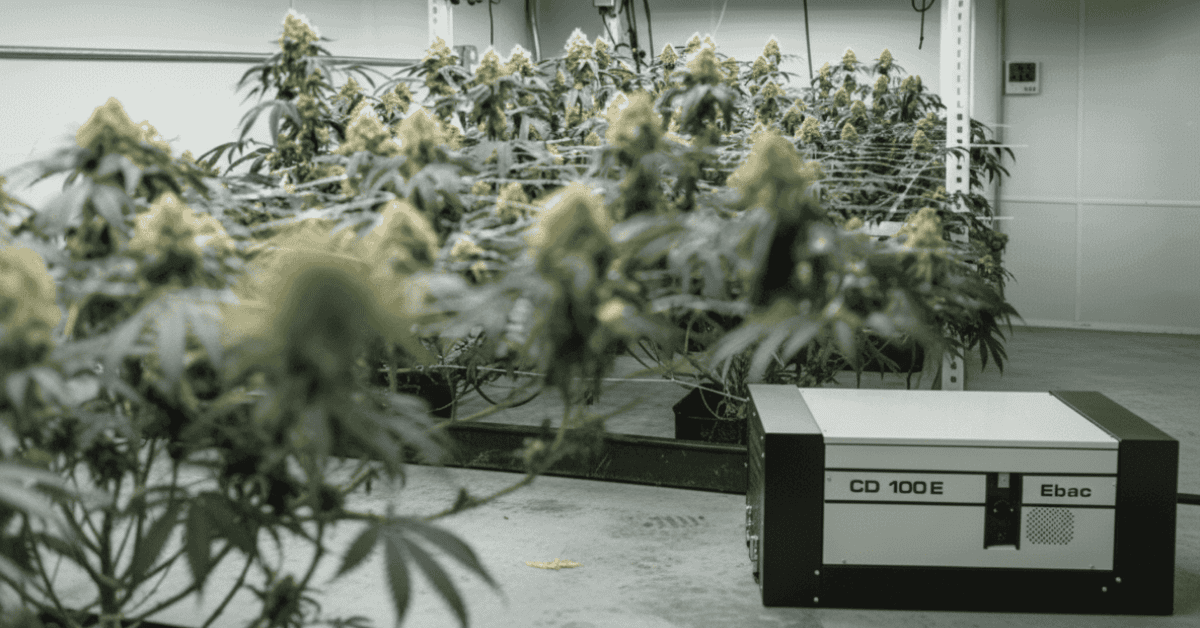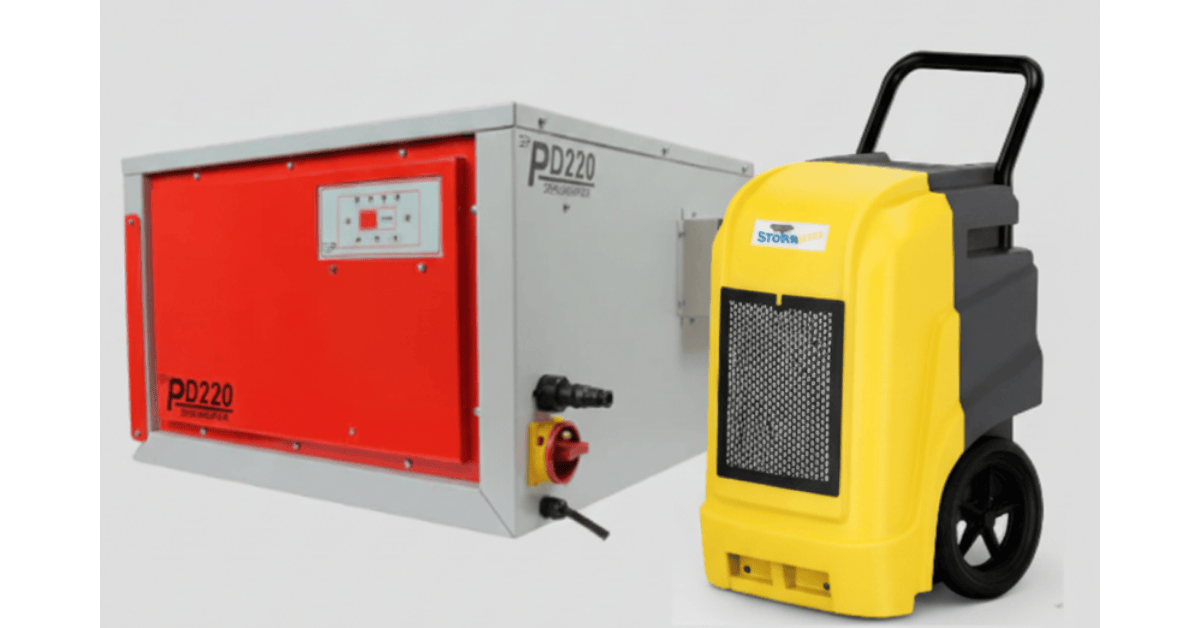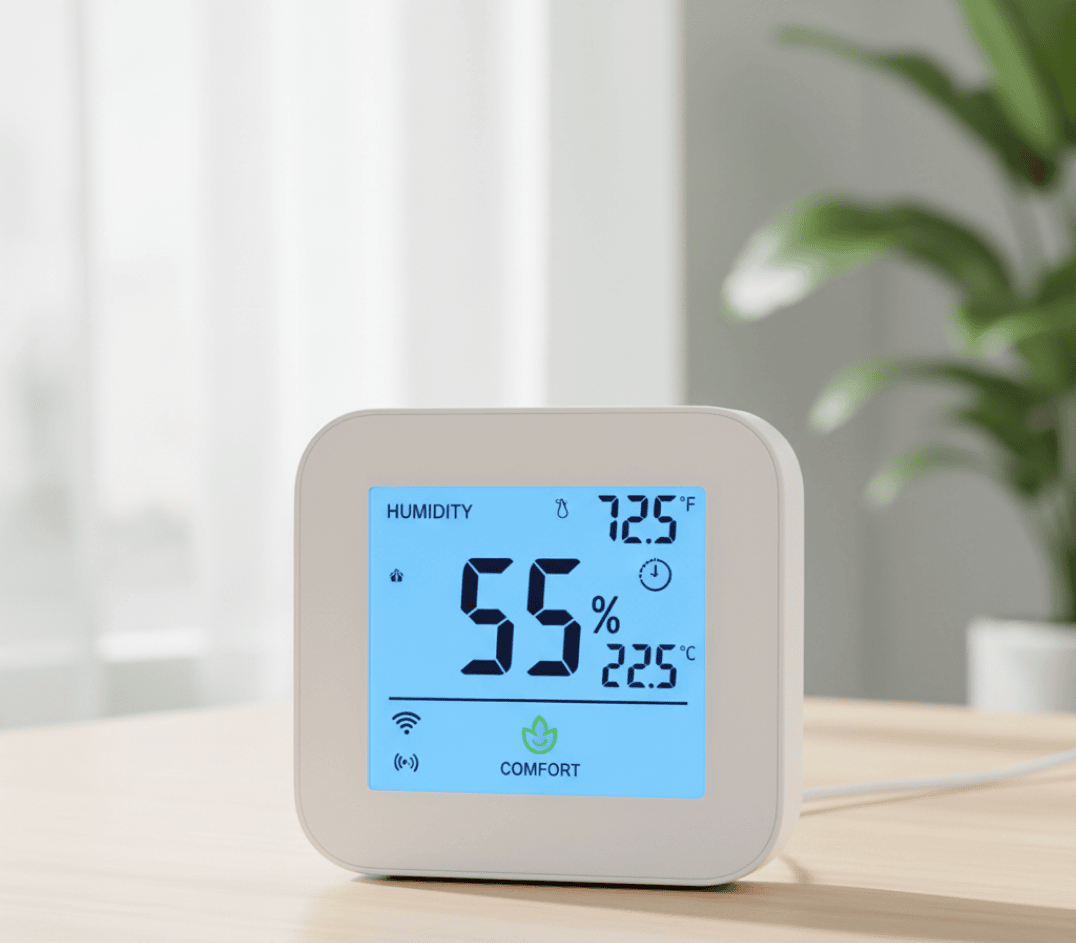.png?width=312&height=273&name=6b.%20Fan%20in%20grow%20room%20by%20Pure%20n%20Natural.png%20(1).png) If you want your plants to grow big and healthy indoors, learning about grow room air circulation is essential. Plants don’t just need sunlight and water - they also need the right air, temperature, and humidity to thrive, just like people do.
If you want your plants to grow big and healthy indoors, learning about grow room air circulation is essential. Plants don’t just need sunlight and water - they also need the right air, temperature, and humidity to thrive, just like people do.
If you’d like a more detailed walkthrough of airflow types and strategies, see our guide: The Ins & Outs of Grow Room Ventilation.
The Science of Plant Growth: Why Air Quality, Humidity, and Temperature Matter
Plants "breathe" through tiny holes in their leaves, taking in carbon dioxide and releasing oxygen. If the air in your grow room sits still or becomes too stuffy, your plants can’t "breathe" properly.
Humidity and temperature also affect how plants take up water, grow leaves, and make food. When these factors are off, plants get stressed, sick, or produce fewer flowers or fruit.
Common Mistakes in Grow Room Ventilation
Many growers make these common mistakes when setting up their grow rooms:
- Relying on just one small fan and thinking it’s enough.
- Placing both intake and exhaust fans on the same side of the room.
- Forgetting to mix air from top to bottom - hot air rises!
- Failing to clean fans and vents, which reduces airflow over time.
Here’s what users say online:
“I spent weeks chasing down mold issues, and it was all fixed after I added a second fan for better airflow across my grow tent!” - Reddit
While avoiding these mistakes is critical, it’s equally important to consider air purification and circulation - we explore this further in Why Grow Room Ventilation Isn’t Enough.
Impacts of Poor Air Quality
Poor grow room air quality can:
- Lower your crop yield by slowing growth.
- Cause mold or mildew on your plants and walls.
- Increase your energy bills, since equipment works harder to cool or warm the room.
To prevent lingering odors and airborne contaminants, consider adding a dedicated air cleaner like our Grow Room & Dispensary Smoke Eaters collection, designed to improve air quality and reduce plant-related smells.
One grower on a public forum wrote:
“Poor airflow made my tent a sauna, and then the clones all got powdery mildew. Won’t make that mistake again.” - Public forum
For strategies to reduce excess humidity, see our guide: How to Lower Humidity in Grow Room Setup.
Basics of Air Circulation Setups
To keep air moving effectively in your grow room, you’ll need a combination of the following:
- Exhaust fan - Pulls out hot, stale, humid air from the top. Check out our air filtration systems from Pure n Natural.
- Intake vent or fan - Brings in fresh air from outside to replace the warm, humid air.
- Drying fans - Help move air between plants, stopping dead spots where mold loves to grow.
A good tip: place the exhaust fan near the ceiling and the intake vent near the floor, on opposite sides of the room, to create the best cross-breeze.

Explore Grow Room Solutions
Ready to get started with better air circulation?
Check out the full range of fans, filters, and air purification systems at Pure n Natural to build your ideal grow room environment.
To complement your setup, don’t forget proper humidity management - explore The Importance of Humidifiers in a Grow Room Setup for expert tips.
Still have questions? Contact us and get personalized recommendations within an hour.
Quick FAQ: Grow Room Airflow & Climate Control
How many fans do I need for my grow room?
That depends on the size of your space. As a rule of thumb, aim for enough airflow to replace the entire room’s air volume once every 1-3 minutes.
Should intake fans be active or passive?
Smaller grow tents can use passive intakes, but larger setups benefit from active intake fans for consistent airflow.
How often should I clean ventilation equipment?
Wipe fan blades and vents every two weeks to prevent dust buildup, which can reduce efficiency by 20% or more.
Can ventilation reduce humidity by itself?
Ventilation helps control humidity, but severe moisture issues may require a dehumidifier or additional airflow solutions.
Learn how to perfect your environment with our Marijuana Grow Room Setup Guide, and stay audit-ready with the 2025/2026 Cannabis Compliance Playbook — your go-to resource for compliant, efficient cannabis operations.





